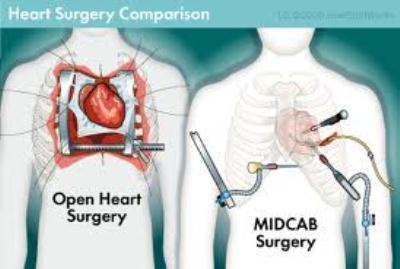Home » Heart Disease »
How Mitral Valve Repair Surgery Is Performed
A properly functioning heart is essential for a healthy body and a long life. Because the heart is comprised of several different areas, each conducting its own specific tasks, making repairs to each area requires specialized surgical techniques. The mitral-or left hand-valve of the heart is one such area.
The mitral valve is, on its own, a complex structure that controls the flow of blood through the heart’s left side. It opens and closes at regular, rhythmic intervals, allowing blood from the lungs to enter and exit the heart’s main pumping chamber. When it malfunctions or is damaged, the mitral valve can allow blood to flow backward or to leak out of the heart, leading to many potential health issues, up to and including cardiac arrest. In many instances, surgery on the mitral valve can quickly become a life-saving requirement.
Mitral valve repair surgery is an intricate and delicate procedure whether it is regular or minimally invasive. Depending upon the condition of the heart and the patient’s general health, the cardiac surgeon will determine which type of mitral valve repair surgery is the best option.
Regular surgical mitral valve repair is a major procedure that requires the patient to be placed under general anesthesia and hooked up to a heart-lung machine for the duration of the process. A cut of approximately ten inches is made in the sternum and the rib cage is spread open to allow the surgeon access to the heart. Depending upon the degree of damage, the mitral valve will then be repaired or replaced.
In many cases, the surgeon will repair the valve or perform a ring annuloplasty. A ring annuloplasty is the procedure performed to repair the ring-like portion of tissue surrounding the valve by sewing a ring of cloth, tissue or metal around it. In valve repair, the surgeon will shape or rebuild one or more of the three leaflets that make up the valve. These are the parts of the valve that open and close it.
In extreme cases, the mitral heart valve must be replaced with an artificial valve. When replacement is required, the damaged valve is removed. A mechanical valve is sewn into place of the original. The new valve may be constructed of plastic or metal, or a bioprosthetic valve will be installed. The latter is usually made from pig tissue, and it is less prone to blood clots that can occur from using manmade materials.
Once the repair or replacement is complete, catheters are placed around the heart to allow fluids to drain. Then the breastbone is closed, usually using stainless steel wires. Healing of the breastbone takes up to six weeks, and the wires will remain inside the body.
Because of such an invasive opening of the body, healing time is lengthy, and the risk of infection or complications is increased in the type of surgery described above. Furthermore, patients may be required to take blood thinners for the rest of their lives. They may also have to make considerable changes to their lifestyles.
Fortunately some patients can be treated with a minimally invasive mitral valve repair procedure. A small incision-generally two inches or so-under the right breast can offer the surgeon a direct view of the mitral valve through the use of an endoscopic tool. The patient may or may not need to be placed on a heart-lung machine, but general anesthesia is still usually required.
Once the surgeon has access to the heart, he or she can reshape the mitral valve, often using the patient’s own tissue. In some cases, there is excess tissue which can be removed to achieve the same effect. In either case, the valve ring is given greater support so that it will perform normally, allowing blood to flow in and out of the left side of the heart at a regular pace with no leakage.
Such a minimally invasive treatment often results in shorter recovery times for the patient, with little or no post-surgical medication required. Many patients can return to work and other normal activities quite soon after surgery.
Finally, a mitral valve repair usually lasts longer than a replacement valve would last, and it offers less risk of serious bleeding. The repaired left ventricle will also often function better than a replaced ventricle, particularly when the patient’s own tissue is used in the repair process.
Of course, each patient is different. Consultation with a qualified cardiac surgeon is required, and the patient may have to undergo various tests to determine the level of damage or loss of function to the mitral valve. After all information has been gathered, the specific type of repair will be determined. With so many advances in heart surgery, however, either procedure is likely to result in a patient who feels better than he or she has in many years.






0 Comments
You can be the first one to leave a comment.